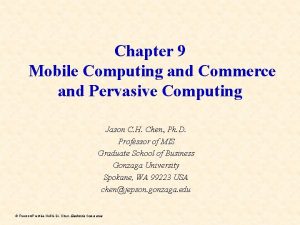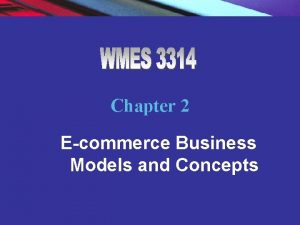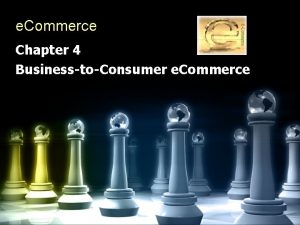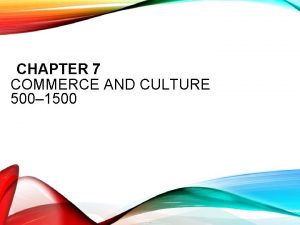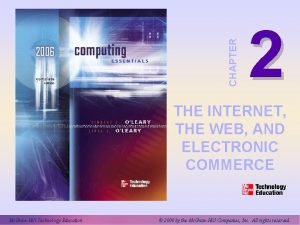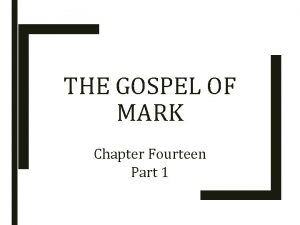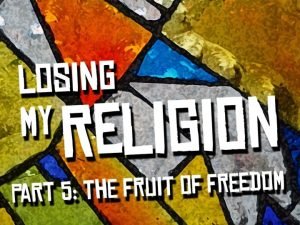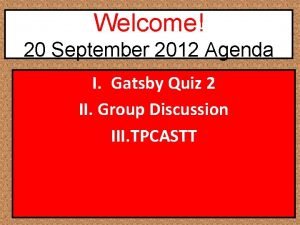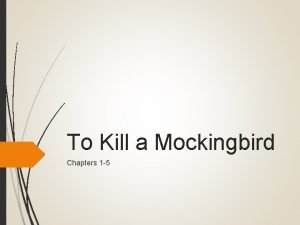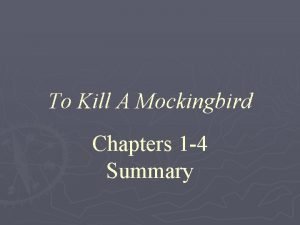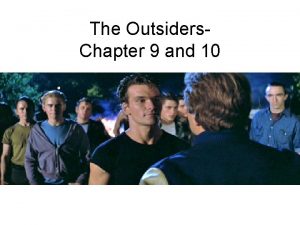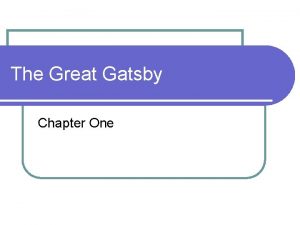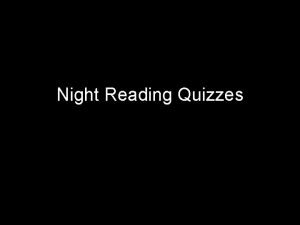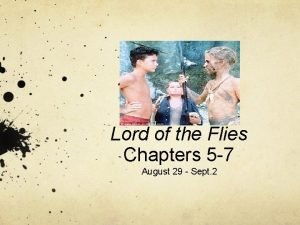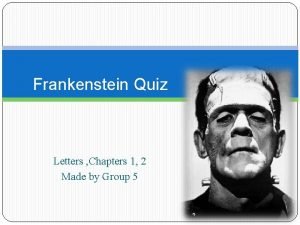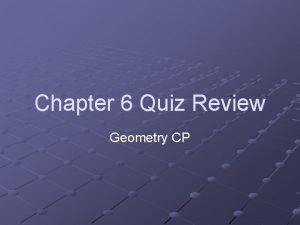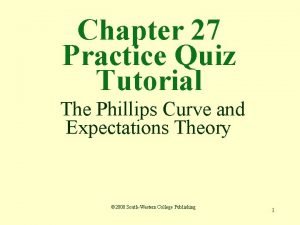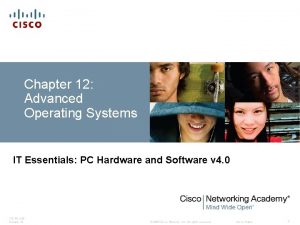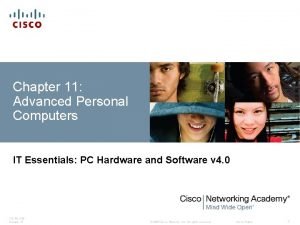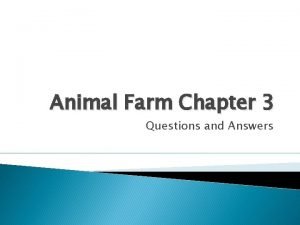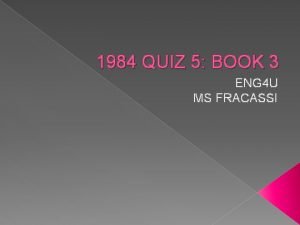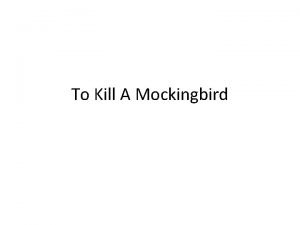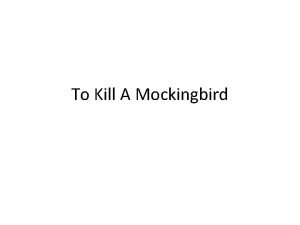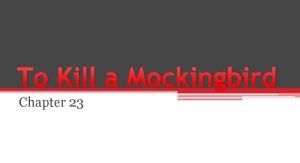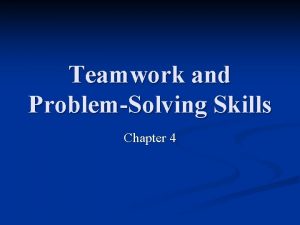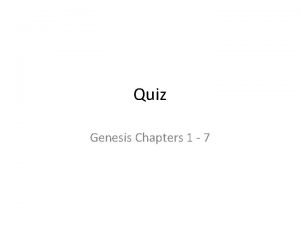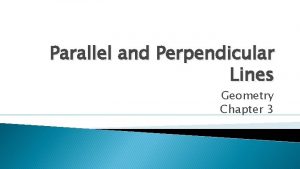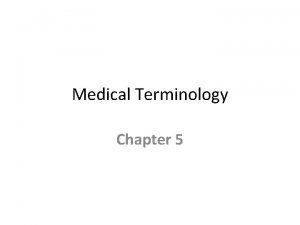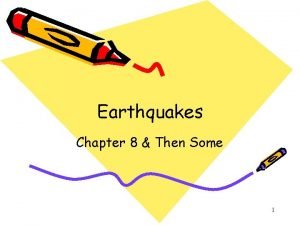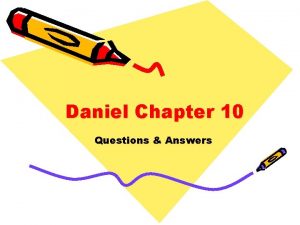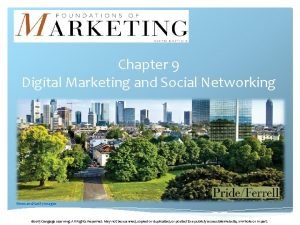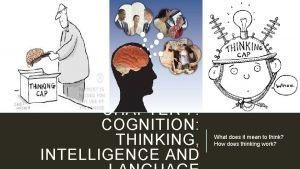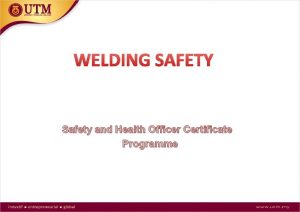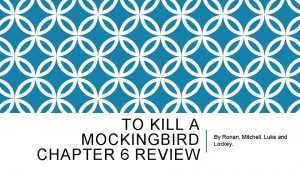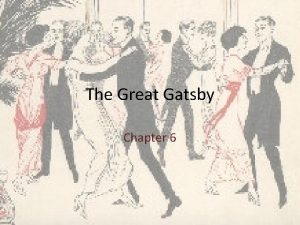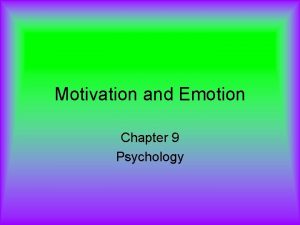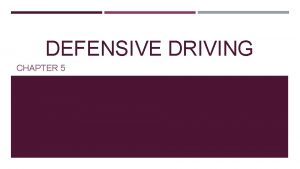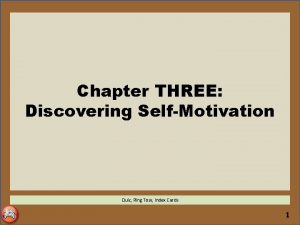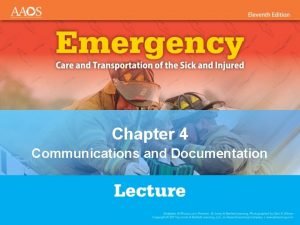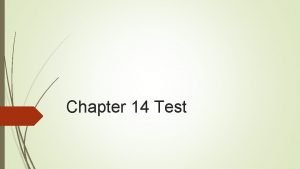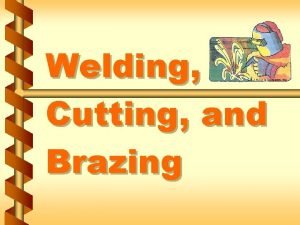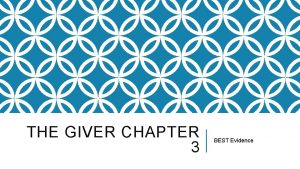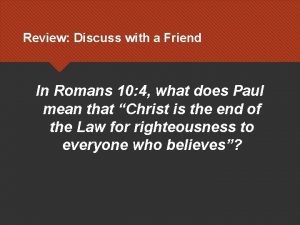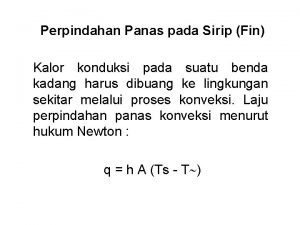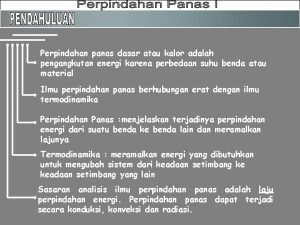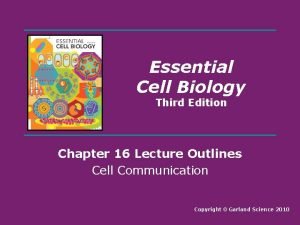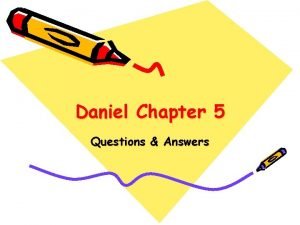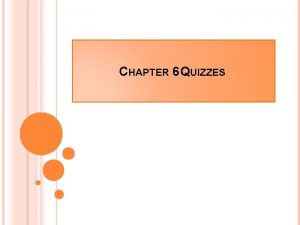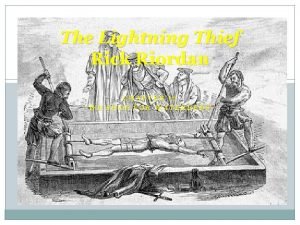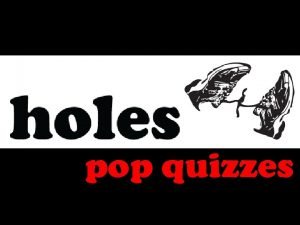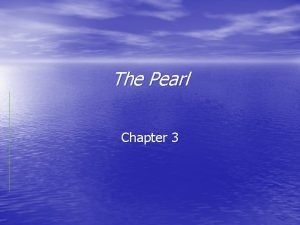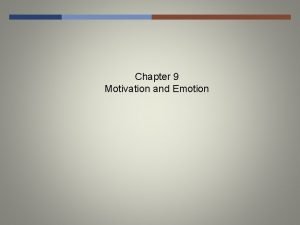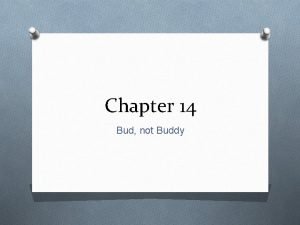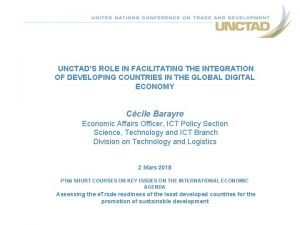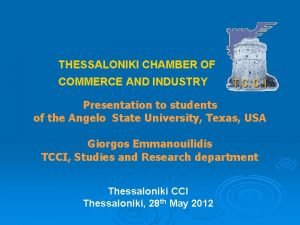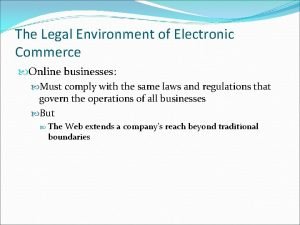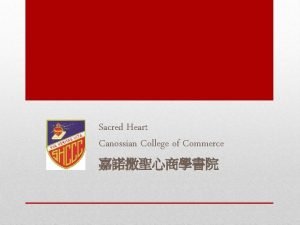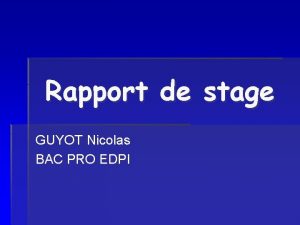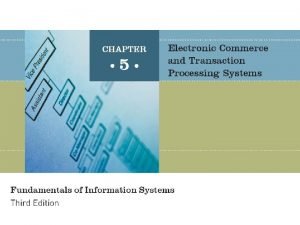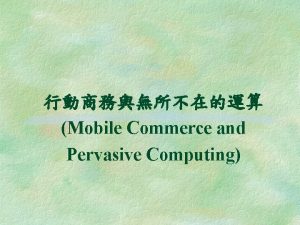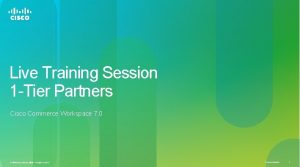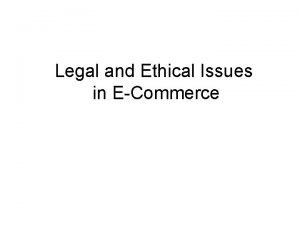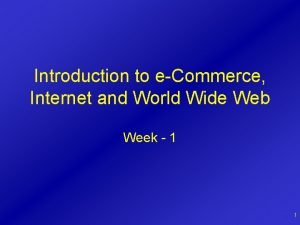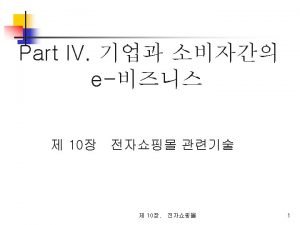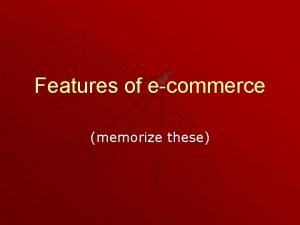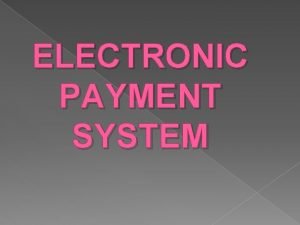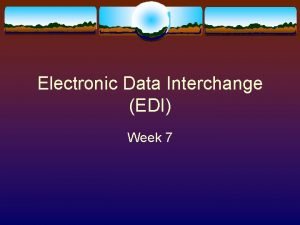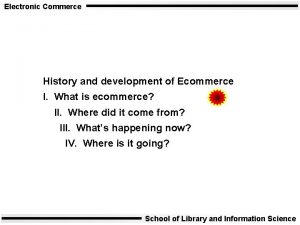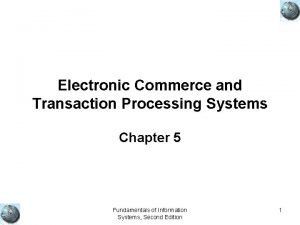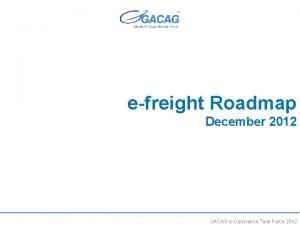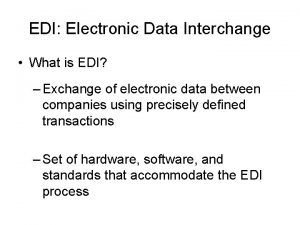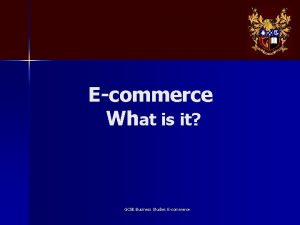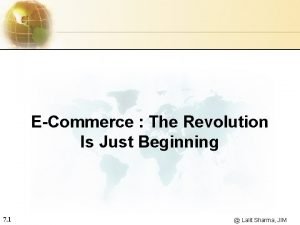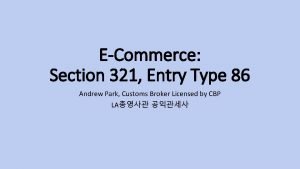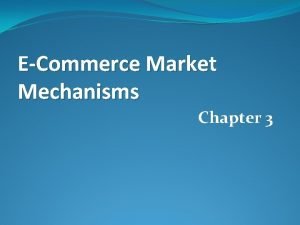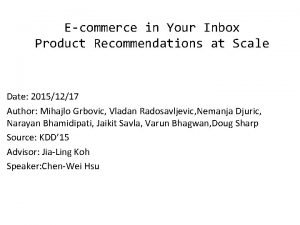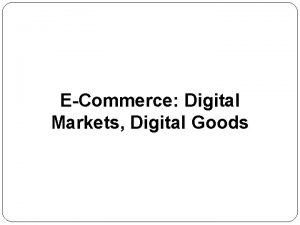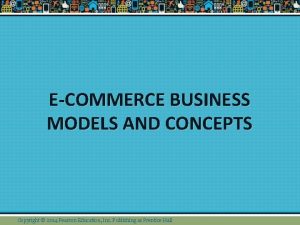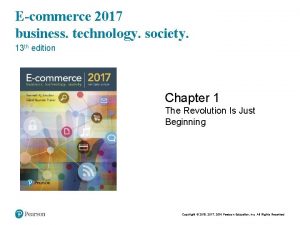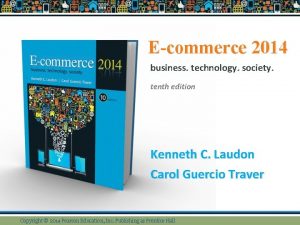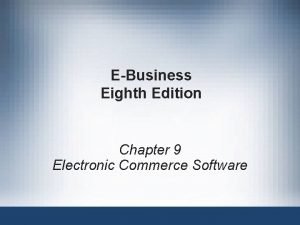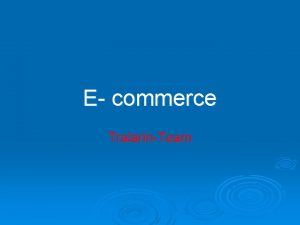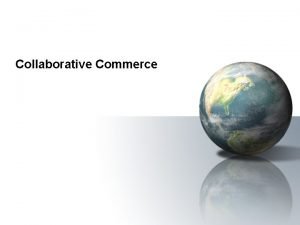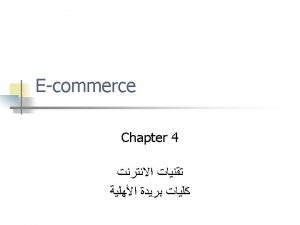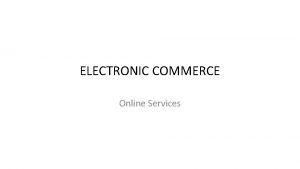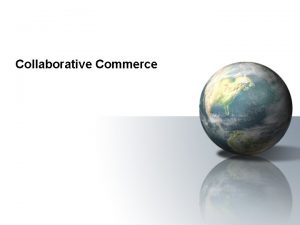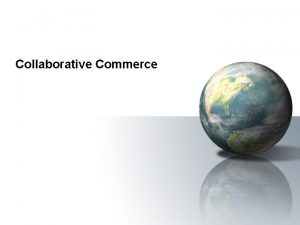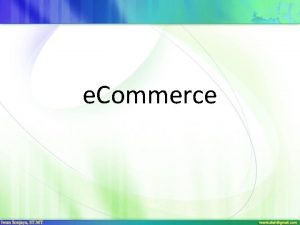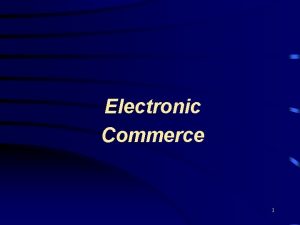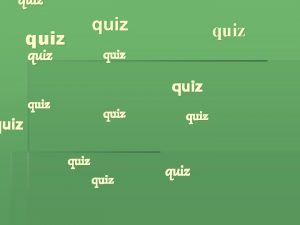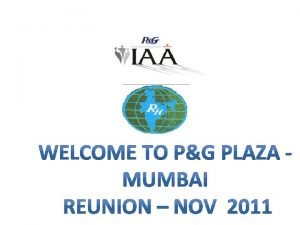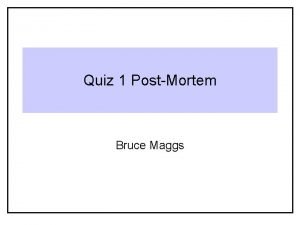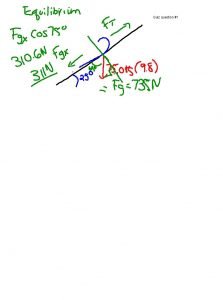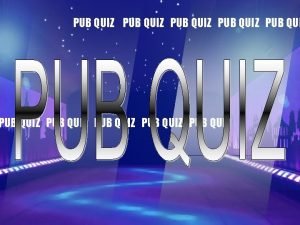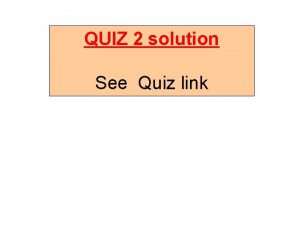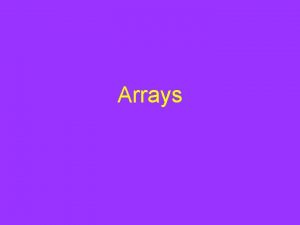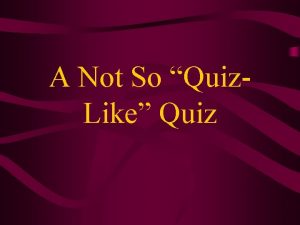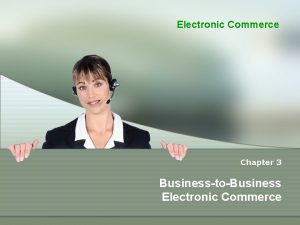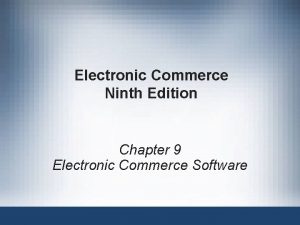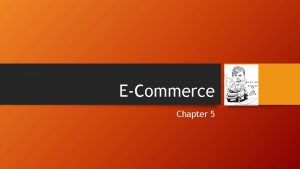XI COMMERCE 1 MARK QUIZ chapter 1 18





































































































- Slides: 101

XI COMMERCE 1 MARK QUIZ chapter 1 -18 Presented by D. Chithambararaj MBA, M. COM, B. Ed 9994154393 Padasalai

1. The place where the goods are sold is _______ (a)Angadi (b) Market (c) Nalangadi (d) Allangadi

2. Hindrance of place is removed by _______ (a) Transport (b) Warehouse (c) Salesman (d) Insurance

3. Who wrote "Arthasasthra"? (a) Kautilya (b) Chanakiya (c) Thiruvalluvar (d) Elangovadigal

4. Trade and Commerce was common to ______ Dynasty. (a) Pallava (b) Chola (c) Pandiya (d) Chera

5. _______ was first sultan who paved way in the dense forest and helped traders to move from one market place to others place for their commercial caravans. (a) Balban (c) Akbar (b) Vascoda Gama (d) Alauddin Khilij

6. The Primary objective of a business is (a) Making Profit (b) Not making Profit (c) Special Skill (d) None of the above

7. Occupation of a Doctor is (a) Employment (b) Business (c) Profession (d) Sole Proprietor

8. The following does not characterize business activity? (a) Production of goods and services (b) Presence of risk (c) Sale or exchange of goods and services (d) Salary or wages

9. Activities undertaken out of love and affection or with social service motive are termed as : (a) Economic activities (b) Monetary activities (c) Non-Economic activities (d) Financial Activities

10. The industries engaged in extraction of iron ore are known as (a) Construction Industries (b) Manufacturing Industries (c) Extraction Industries (d) Genetic Industries

11. Auxiliaries to trade is also called as (a) Trade (b) Advertisement (c) Warehousing (d) Aids to Trade

12. Production which involves several stages for manufacturing finished product is known as (a) Analytical Industry (b) Synthetic Industry (c) Processing Industry (d) None of the above

13. Normally high level risk involved in (a) Industry (b) Commerce (c) Trade (d) All of the above

14. Commerce is mainly concerned with (a) Connecting producer and consumer (b) Pricing of goods (c) Buying and Selling of goods (d) Manufacturing of goods

15. Which is the oldest form of Business organisation? (a) Sole Proprietorship (b) Partnership (c) Co-operative Society (d) Company

16. In which form the owner, establisher and manager is only one? (a) Joint Enterprise (b) Government Company (c) Co-operative Society (d) Sole Proprietor

17. A major disadvantage of sole proprietorship is _____. (a) Limited liability (b) Unlimited liability (c) Easy Formation (d) Quick decision

18. From the following which one is Non-corporate form of business? (a) Joint stock company (b) Sole trading business (c) Government company (d) Co-operatives

19. The firm of Hindu Undivided Family is managed by whom? (a) Owner (b) Karta (c) Manager (d) Partner

20. In the firm of Hindu Undivided Family, how one gets the membership? (a) By Agreement (b) By Birth (c) By Investing Capital (d) By Managing

21. The Members in the joint Hindu family are called ____ (a) Karta (b) Coparceners (c) Generations (d) Partners

‘ 22. Only the male members in the family get the right of inheritance by birth' as ____ (a) Hindu law (b) Mitakshara Law (c) Dayabhaga law (d) None of these

23. A partnership is formed by ______ (a) agreement (b) relationship among persons (c) the direction of government (d) friendship

24. Registration of partnership is _____ (a) compulsory (b) optional (c) not necessary (d) none of the above

25. A temporary partnership which is formed to complete a specific job doing a specified period of time is called ______ (a) Partnership-at-will (b) Particular partnership (c) Limited Partnership (d) Joint Venture

26. The partnership deed also called _______ (a) Articles of Association (b) Articles of Partnership (c) Partnership Act (d) Partnership

27. A partnership is registered with _____ (a) Registrar of Companies (b) Registrar of Co-operatives (c) Registrar of Firms (d) District Collector

28. The relationship between outsiders and the company is defined in ______ (a) Prospectus (b) Articles of Association (c) Memorandum of Association (d) Certificate of Incorporation

29. Table A of the Companies Act is a _____ (a) Model minutes book (b) Model form of Balance Sheet (c) Model of AOA (d) Model of MOA

30. Which of the following is created by a Special Act of Parliament or in State Assemblies? (a) Chartered company (b) Foreign company (c) Government company (d) Statutory company

31. The Board of directors of a company is elected by _____ (a) Creditors (b) Debtors (c) Debenture holders (d) Share holders (members)

32. Companies established as a result of a charter granted by the King or Queen of a country is called ______ (a) Chartered companies (b) Statutory companies (c) Registered companies (d) Foreign companies

33. Membership in a Co-operative organization is : (a) Not open to all (b) Selective (c) Open to all (d) None of them

34. Co-operative fails because of------(a) Unlimited membership (b) Cash trading (c) Mismanagement (d) Loss-making

35. All Co-operatives are established with (a) Philanthropic motive (b) Service Motive (c) Profit motive (d) Reform motive

36. Consumers Co-operation was first successful in----(a) England (b) USA (c) Swiss (d) India

37. Rochdale Society of equitable pioneers was started by-------(a) Robert Owen (b) H. C. Calvert (c) Talmaki (d) Lambert

38. A Multinational Corporation can be defined as a firm which (a) is beyond the control of any government (b) is one of the top 200 firms in the world (c) owns companies in more than one country (d) All the above

39. Centralised control in MNC's implies control exercised by (a) Branches (b) Subsidiaries (c) Headquarters (d) Parliament

40. Enterprises operating in several countries but managed from one country is termed as -----(a) Government company (b) Multinational company (c) Private company (d) Joint Venture

41. Dispersal of decision making power to branches/ affiliates/subsidiaries by head office represent -----(a) Centralisation (b) Decentralisation (c) Power (d) Integration

42. Coca-Cola company is an example of -----(a) MNC (b) Government company (c) Joint Venture (d) Public company

43. The share capital of the government company must not be less than (a) 49% (b) 51% (c) 50% (d) 25%

44. Airport Authority of India is a public enterprise. Identify the form of organisation (a) Statutory Corporations (b) Departmental Undertakings (c) Multi-National Corporations (d) State Owned Company

45. The oldest form of organisation in public sector (a) Public Sector Undertakings (b) Departmental Undertakings (c) Multi-National Corporations (d) Statutory Corporation

46. A Government company purchases shares in the name of (a) Prime Minister (b) President (c) Chief Justice of India (d) State Chief Minister

47. The primary objective of the state enterprises is to -----(a) Earn profit (b) Provide Employment (c) Serve the People (d) All the Above

48. Which bank has the power to issue Bank notes? (a) Central Bank (b) Commercial Bank (c) Co-operative Bank (d) Foreign Bank

49. The Central Bank of India is (a) PNB (b) SBI (c) ICl. CI (d) RBI

50. The Reserve Bank of India commenced its operations from April 1, (a) 1936 (b) 1935 (c) 1934 (d) 1933

51. Bankers are not only dealers of money but also leaders in (a) Economic Development (b) Trade Development (c) Industry Development (d) Service Development

52. Which of the following is not a function of a Central Bank? (a) Guiding and regulating the Banking system of a Country (b) Deal with general public (c) Acts essentially as government banker (d) Maintains deposit accounts of all other banks

53. Which bank is not a Industrial Bank? (a) ICICI (b) HSBC (c) SIDBI (d) IDBI

54. The Local Area Banks are promoting. (a) Rural Savings (b) Business Savings (c) Industrial development (d) Agricultural development

55. Foreign banks are begun their operation since (a) 1978 (b) 1979 (c) 1980 (d) 1981

56. Electronic banking can be done through (a) Computers (b) Mobile Phones (c) ATM (d) All of the above

57. Minimum how much amount can be transferred through RTGS? (a) Any Amount (b) Rs. 50, 000 (c) Rs. 2 Lakhs (d) Rs. 5 Lakhs

58. The largest commercial bank of India. (a) ICICI (b) SBI (c) PNB (d) RBI

59. In which kind of account, it is compulsory to deposit certain amount at certain time? (a) Savings Deposit (b) Fixed Deposit (c) Current Deposit (d) Recurring Deposit

60. Which of the following is not a type of advance provided by the commercial bank? (a) Collection and Supplying Business information (b) Overdraft (c) Cash Credit (d) Discounting of Bills

61. Warehouse removes the hindrance of _____ (a) Person (b) Time (c) Risk (d) Knowledge

62. A warehouse holds goods as a _____ centre. (a) Marketing (b) Sorting (c) Distribution (d) Selling

63. ______ can be given as collateral security for getting financial assistance from bank. (a) Dock warrant (b) Warehouse Receipt (c) Dock Receipt (d) Warehouse warrant

64. ______ warehouses are licensed by the government and are permitted to accept the goods on bond. (a) Bonded (b) Private (c) Cold storage (d) Co-operative

65. _____ warehouses are used for storing perishable goods like fruits, vegetables etc. (a) Bonded (b) Private (c) Cold storage (d) Co-operative

66. The document which authorizes to deliver the goods either in part of full is called _______ (a) Warehouse warrant (b) Dock receipt (c) Dock warrant (d) None of these

67. The Institutional warehouse started with the support of Government is _______ (a) Bonded warehouse (b) Public warehouse (c) Food corporation of India (d) Customs bonded

68. Transport removes the hindrance of (a) Time (b) Place (c) Personal (d) Knowledge

69. Air consignment note is prepared in ____ forms. (a) One (b) Two (c) Three (d) Four

70. ______ is a document acknowledging the receipt of goods by a carrier (a) Way bill (b) Consignment note (c) Charter (d) Bill of lading

71. Which is the fastest means of transport? (a) Rail (b) Road (c) Sea (d) Air

72. The basic principle of insurance is ____. (a) Insurable Interest (b) Co-operation (c) Subrogation (d) Proximate cause

73. ______ is not a type of general insurance. (a) Marine Insurance (b) Life Insurance (c) Fidelity Insurance (d) Fire Insurance

74. Which of the following is not a function of insurance? (a) Lending Funds (b) Risk Sharing (c) Capital formation (d) Protection of life

75. Which of the following is not applicable in insurance contract? (a) Unilateral Contract (b) Conditional Contract (c) Indemnity Contract (d) Inter-personal contract

76. Which of the following is a type of marine insurance? (a) Money back (b) Mediclaim (c) Hull insurance (d) Corgo insurance

77. A continuing relationship which provides license privileges to do a Business and provide Training, merchandising for a consideration is called _____. (a) Franchising (b) Factoring (c) Supply chain Management (d) Exchange

78. A condition where a factor agrees to provide complete set of services like financing, debt collection, consultancy is called______ (a) Maturity Factoring (b) National Factoring (c) Full service Factoring (d) Recourse factoring

79. Buying and Selling of goods through electronic network is known as___ (a) E-commerce (b) Internet (c) Website (d) Trade

80. An organization carrying out activities to move goods from Producer to Consumer is (a) Transport (b) Logistics (c) Channels (d) Marketing

81. The role of Government in logistics management is through (a) Legislations (b) Governance (c) Transport (d) Distribution

82. The main Benefit of Logistics is (a) Productivity (b) Cost minimization (c) Profitability (d) Storage

83. What aims for an effective management response over the longer run (a) Logistics (b) Supply chain Management (c) Demand (d) Supply

84. The model that identifies alternatives, criteria for decision making and analyse alternatives to arrive at the best choice is (a) Routing Model (b) Scheduling Model (c) Inventory Model (d) Alternative analysis

85. A Company under outsourcing transfers activities which are (a) Core (b) Non-core (c) Business (d) Non-Business

86. Business units can reduce expenditure by outsourcing front office work like (a) Paper Work (b) File Work (c) Billing (d) Manufacture

87. The main benefit of outsourcing is (a) Productivity (b) Cost reduction (c) Skill (d) Units

88. Outsourcing job is given to developing countries specifically for (a) Cheap labour (b) Land (c) Factor (d) Capital

89. Outsourcing is carried out for the benefit of (a) Global Village (b) Transport (c) Factory (d) Time and Money

90. Which type of responsibility gives the benefit to the society out of its profits earned? (a) Legal (b) Ethical (c) Moral (d) Economic

91. The stakeholders of socially responsible business units are except (a) Share Holders (b) Employees (c) Government (d) Company

92. Assuming Social Responsibility of business helps the enterprise in ____ (a) Increase Profit (b) Decrease Profit (c) Sustainability (d) Equilibrium

93. Socially responsible business provides goods at (a) High price (b) Low price (c) reasonable price (d) moderate price

94. Social responsibility towards employees represents the following except (a) reasonable remuneration (b) proper facilities (c) Social security (d) Exploitation

95. Which of the following helps in maximising sale of Goods to society? (a) Business Success (b) Laws and regulations (c) Ethics (d) Profession at management

96. Ethics is important for (a) Top Management (b) Middle Level Managers (c) Non-Managerial Employees (d) All of them

97. Which of the following does not ensure effective ethical practices in a Business enterprise. (a) Publication of a code (b) Involvement of Employees (c) Establishment of compliance mechanism (d) None of them

98. The role of top management is to guide the entire organisation towards (a) General Behaviour (b) Organisational behaviour (c) Ethical upright behaviour (d) Individual behaviour

99. The ethical conduct of employees leading to standard practices results in (a) Good behaviour (b) Bad behaviour (c) Ethical behaviour (d) Correct decision making

THANK YOU……
 Location-based commerce (l-commerce)
Location-based commerce (l-commerce) Deductive reasoning examples
Deductive reasoning examples Inductive vs deductive geometry
Inductive vs deductive geometry Tetraphosphorus octoxide formula
Tetraphosphorus octoxide formula Content provider business model
Content provider business model E commerce chapter 4
E commerce chapter 4 Commerce and culture chapter 7
Commerce and culture chapter 7 Chapter 2 the internet the web and electronic commerce
Chapter 2 the internet the web and electronic commerce Summary of mark chapter 1
Summary of mark chapter 1 Galatians 5:19-21 niv
Galatians 5:19-21 niv Great gatsby chapter 7-9 quiz
Great gatsby chapter 7-9 quiz Tkam chapter 1-5 quiz
Tkam chapter 1-5 quiz To kill a mockingbird chapter 1-11 summary
To kill a mockingbird chapter 1-11 summary Outsiders chapter 9 quiz
Outsiders chapter 9 quiz Great gatsby chapter 1 and 2 quiz
Great gatsby chapter 1 and 2 quiz How does nick characterize the guests at gatsby’s party
How does nick characterize the guests at gatsby’s party Night quiz chapter 1
Night quiz chapter 1 Lord of the flies chapter 5-7 quiz
Lord of the flies chapter 5-7 quiz Frankenstein letters 1-4 quiz
Frankenstein letters 1-4 quiz Daniel chapter 2 worksheet
Daniel chapter 2 worksheet Chapter 6 practice test geometry
Chapter 6 practice test geometry Chapter 4 fire service communications answers
Chapter 4 fire service communications answers Ap statistics chapter 27 quiz
Ap statistics chapter 27 quiz It essentials chapter 12 quiz
It essentials chapter 12 quiz It essentials chapter 11
It essentials chapter 11 Chapter 1 lesson 1 your total health lesson 1 quiz
Chapter 1 lesson 1 your total health lesson 1 quiz Animal farm chapter questions and answers pdf
Animal farm chapter questions and answers pdf 1984 book test
1984 book test To kill a mockingbird chapter 1 quiz
To kill a mockingbird chapter 1 quiz What game does dill invent in to kill a mockingbird
What game does dill invent in to kill a mockingbird To kill a mockingbird 23
To kill a mockingbird 23 The outsiders quiz chapter 1
The outsiders quiz chapter 1 Teamwork problem solving
Teamwork problem solving Questions from genesis chapter 1
Questions from genesis chapter 1 Perpendicular theorem
Perpendicular theorem Chapter 5 medical terminology quiz
Chapter 5 medical terminology quiz Chapter 8 quiz 1
Chapter 8 quiz 1 Bible quiz daniel chapter 10
Bible quiz daniel chapter 10 Essentials of social media marketing chapter 9 quiz
Essentials of social media marketing chapter 9 quiz Cognition thinking intelligence and language
Cognition thinking intelligence and language Gas welding conclusion
Gas welding conclusion Chapter 6 to kill a mocking bird
Chapter 6 to kill a mocking bird Summary of chapter 6 of the great gatsby
Summary of chapter 6 of the great gatsby Intrinsic and extrinsic motivation
Intrinsic and extrinsic motivation Beowulf chapter 9
Beowulf chapter 9 Chapter 5 defensive driving
Chapter 5 defensive driving Dapps goal
Dapps goal Chapter 4 communications and documentation
Chapter 4 communications and documentation Accounting chapter 4 study guide true and false
Accounting chapter 4 study guide true and false Welding fire safety
Welding fire safety The giver chapter 3 quiz
The giver chapter 3 quiz Romans chapter 10 quiz
Romans chapter 10 quiz Rumus konduksi
Rumus konduksi Perpindahan panas pada gambar terjadi secara
Perpindahan panas pada gambar terjadi secara Cell chapter 16
Cell chapter 16 Daniel chapter 1 questions and answers
Daniel chapter 1 questions and answers Chapter 6 quiz 1 lessons 6-1 and 6-2 answers
Chapter 6 quiz 1 lessons 6-1 and 6-2 answers Chapter 17 percy jackson the lightning thief
Chapter 17 percy jackson the lightning thief Holes chapter 36-40 quiz
Holes chapter 36-40 quiz The pearl by john steinbeck chapter 3
The pearl by john steinbeck chapter 3 Why are motives described as hypothetical states?
Why are motives described as hypothetical states? What happened in chapter 14 of bud not buddy
What happened in chapter 14 of bud not buddy Three pillars of e commerce
Three pillars of e commerce Interstate vs intrastate commerce
Interstate vs intrastate commerce Thessaloniki chamber of commerce and industry
Thessaloniki chamber of commerce and industry The legal environment of electronic commerce
The legal environment of electronic commerce Social commerce zone
Social commerce zone Shccc
Shccc Rapport de stage terminal bac pro
Rapport de stage terminal bac pro Objectives of ecommerce
Objectives of ecommerce Infrastructure of m commerce
Infrastructure of m commerce Mobile computing and mobile commerce
Mobile computing and mobile commerce Cisco commerce
Cisco commerce What is ethical issues in e commerce
What is ethical issues in e commerce E commerce and world wide web
E commerce and world wide web Social commerce esempi
Social commerce esempi Multimedia content and network publishing infrastructure
Multimedia content and network publishing infrastructure Example of universal standards in e-commerce
Example of universal standards in e-commerce Electronic payment system definition
Electronic payment system definition Edi introduction
Edi introduction Virtual value chain in e commerce
Virtual value chain in e commerce Transaction processing system in e-commerce
Transaction processing system in e-commerce Gacag
Gacag What is edi in e commerce
What is edi in e commerce E commerce gcse business
E commerce gcse business The revolution is just beginning e commerce
The revolution is just beginning e commerce Labai lk
Labai lk Entry type 86
Entry type 86 What is e-commerce mechanisms?
What is e-commerce mechanisms? E-commerce in your inbox: product recommendations at scale
E-commerce in your inbox: product recommendations at scale Consumer oriented e commerce
Consumer oriented e commerce Commerce definition
Commerce definition Features of e commerce
Features of e commerce Digital market and digital goods
Digital market and digital goods Pearson business model
Pearson business model Ecommerce server
Ecommerce server 8 unique features of e-commerce technology
8 unique features of e-commerce technology E commerce 2014
E commerce 2014 Ecole supérieure de commerce la neuveville
Ecole supérieure de commerce la neuveville Esc la neuveville
Esc la neuveville Enterprise-class electronic commerce software:
Enterprise-class electronic commerce software: E commerce electronic data interchange
E commerce electronic data interchange
